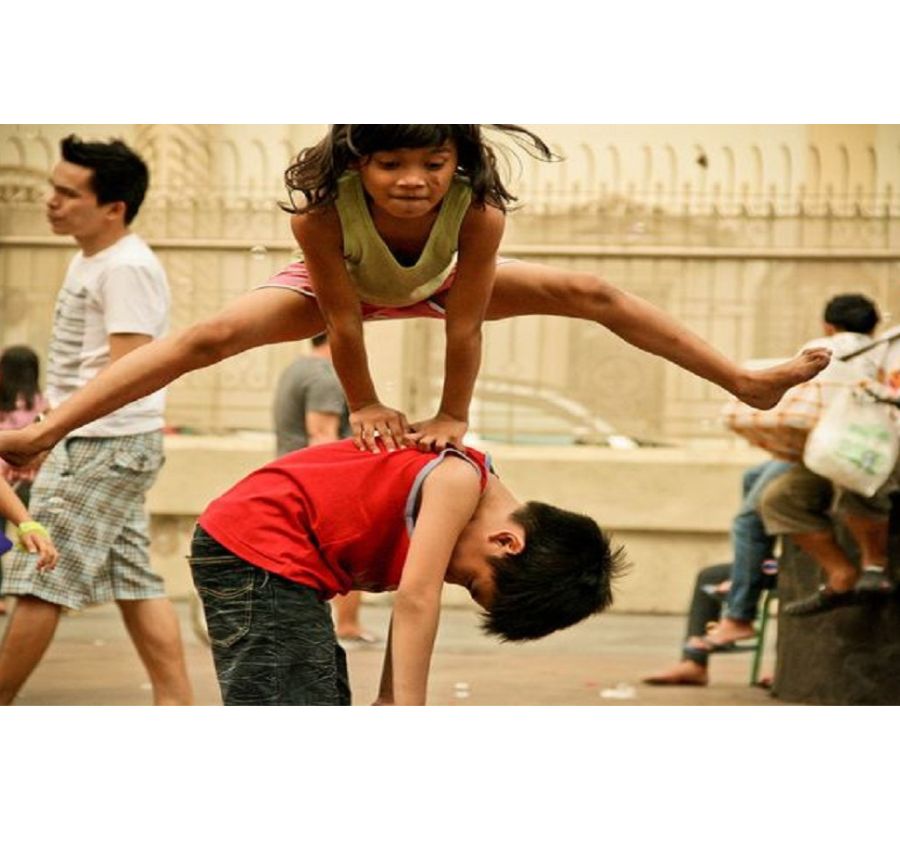Batang 90’s: Childhood Games We All Miss

The type of life that the Batang 90’s were able to live can never be understood by many Gen Z kids or those born in the early 2000s. Children spent most of their time playing with other children on those days. So, it was fun and unforgettable. When the Batang 90’s were still in their early years, the internet and gadgets weren’t around. That’s why they like to create games that involve the players themselves.
Batang 90’s: Childhood Games We All Miss
Most games are typically played outside the home because it is customary for Filipinos to play in a larger, more open space. In the provinces, certain games are played or held during town fiestas.
TUMBANG PRESO
Tumbang Preso is a popular game among Filipino kids native to the Philippines. Preso means prisoner and Tumba means to fall. You’ll need an empty can and a slipper to play this game. The empty can is the circle’s central focus, and the slipper is meant to strike it. If the can falls, you can pick up the slipper, dash into the base, and hit the can once more.

LUKSONG TINIK
Before, this was the game that most kids play. After classes, most kids participate in this hobby. So, this is how you play it. By sitting with one foot higher than the other and equally raising their hands like in the image, two children can act as “tinik” (thorns). If the team can successfully jump higher than the tinik, the thorns will gradually raise up. If they fail, it’s the other team’s turn.
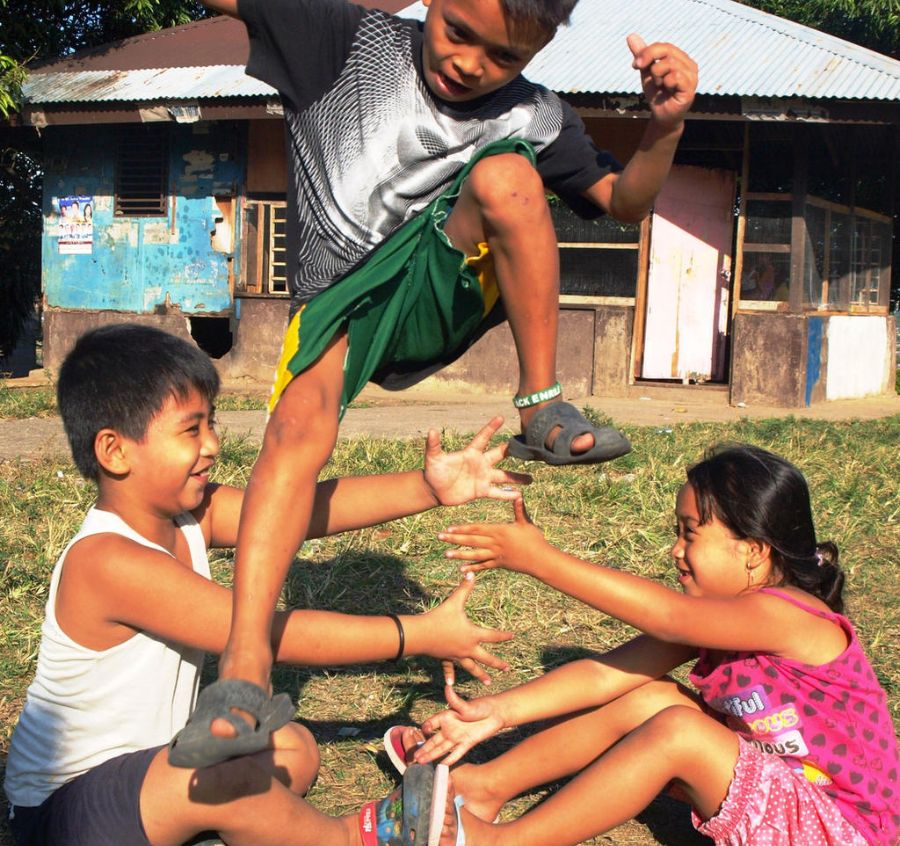
AGAWAN BASE
Two teams have two separate bases on each end. The players determine how many are on each squad. Each team takes one of the two bases as their own. The goal is to tag the base of the other team without being tagged. If you are tagged, you are moved to the other team and require rescue. The rules are changed in some variations, some of which allow you to connect additional items to the base so that you can reach it easily. Usually, there are fixed results, such as the first team to tag the opposing team five times wins.
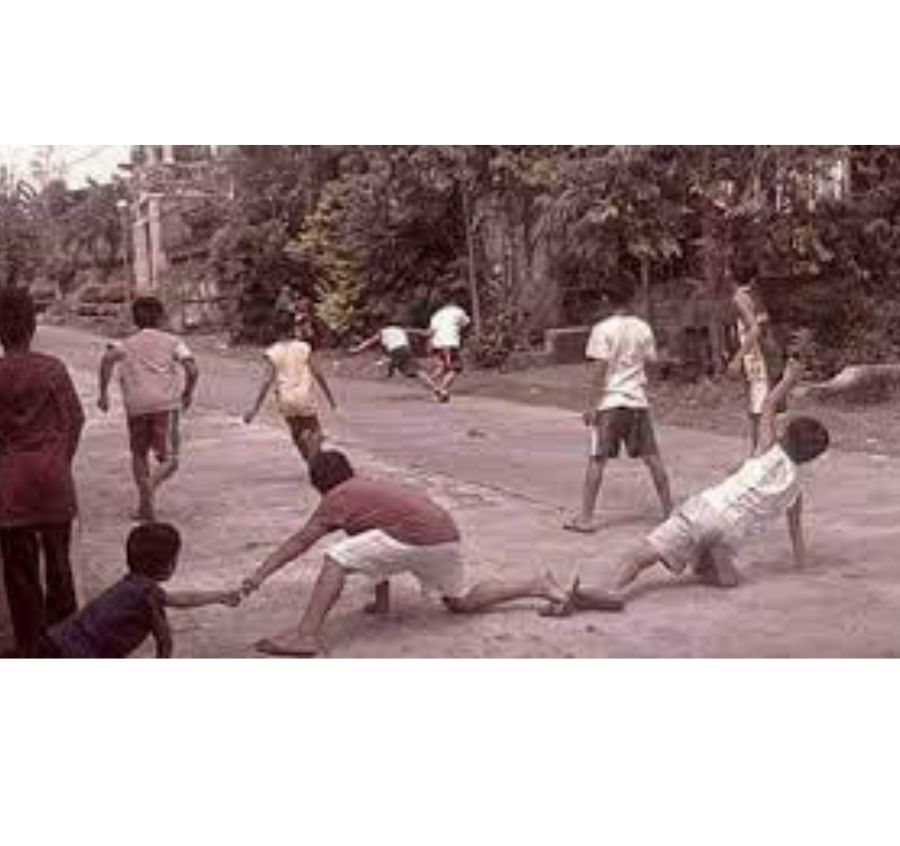
PATINTERO
Most children are playing this game on empty roads. Don’t let the bantays or opposing team tag you; else, your team will become the next bantay. Keep clear of the bantays zone; if one of you successfully crosses the last horizontal line, your team scores one point.
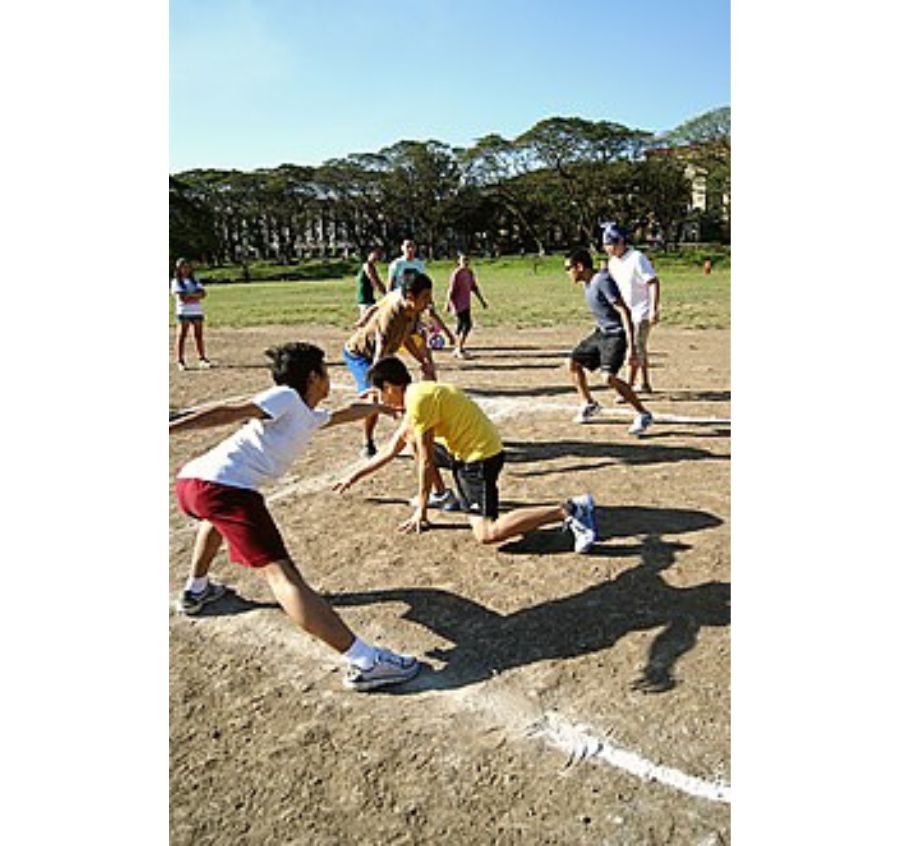
BAHAY-BAHAYAN
A role-playing game in which kids take on the roles of members of a fictional family, sometimes to the point where one of them ends up being the home’s “pet.” Then they imitate various family activities, such as having supper, attending church, and so forth.
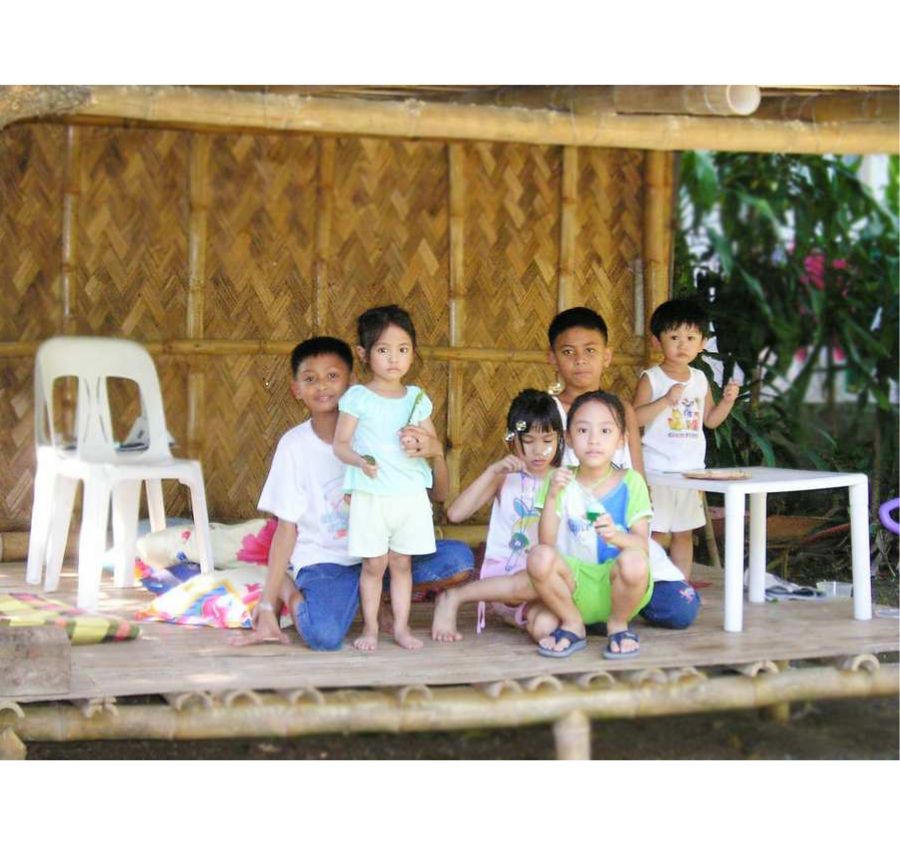
BAHAY-KUBO GAME
A hand-clapping competition typically involves four players. They are divided into two pairs, with each team consisting of two persons facing the other and both pairs facing the center (the two pairs being perpendicular to each other). The bahay kubo is then performed by each partner while engaging in a hand-clapping routine. Each duo trades “routines” in the song’s middle.
SIPA
Everyone can do it with a coin, candy wrapper or paper, and a rubber band. Fold the coin with a candy wrapper and knot it with a rubber band. Don’t let the sipa fall to the ground without using your elbow or foot, or you’ll become the next taya.

CHINESE GARTER
While the others try to cross over a horizontally stretched garter, two people hold both ends of the garter. To cross without tripping over the garter is the goal. The garter gets taller with each round, increasing in height (the game starts with the garter at ankle-level, followed by knee-level, until the garter is positioned above the head). Flexibility is required in the higher rounds, and players typically leap with their feet first in the air, crossing the garter on the way up and landing on the opposite side. Additionally, it is acceptable to perform cartwheels to “cross” the garter at the upper levels.
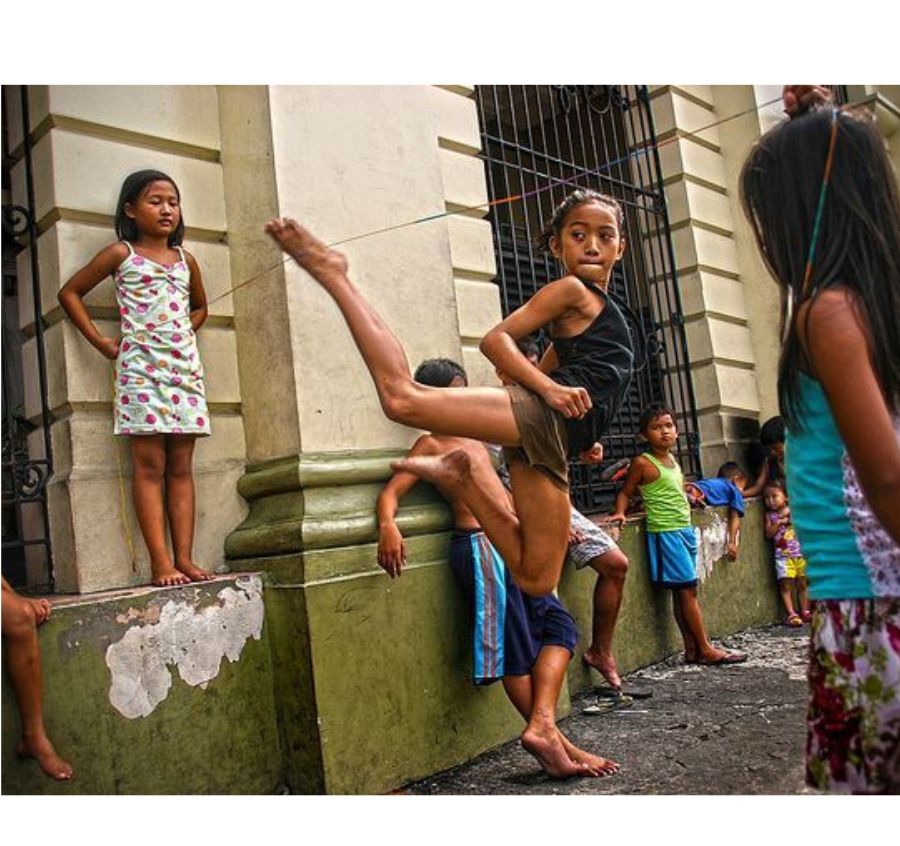
TEN TWENTY
A game played by two partners, one of which uses a stretched length of a garter. One pair faces each other from a distance, with the garter wrapped around them so that a pair of parallel lengths of the garter is between them. The other pair then begins a leaping “routine” over the garters while singing a song (“ten, twenty, thirty, and so on until one hundred). Each stage begins with ankle-height garters and rises to higher places, with players bouncing nimbly on the garters while doing their dances.
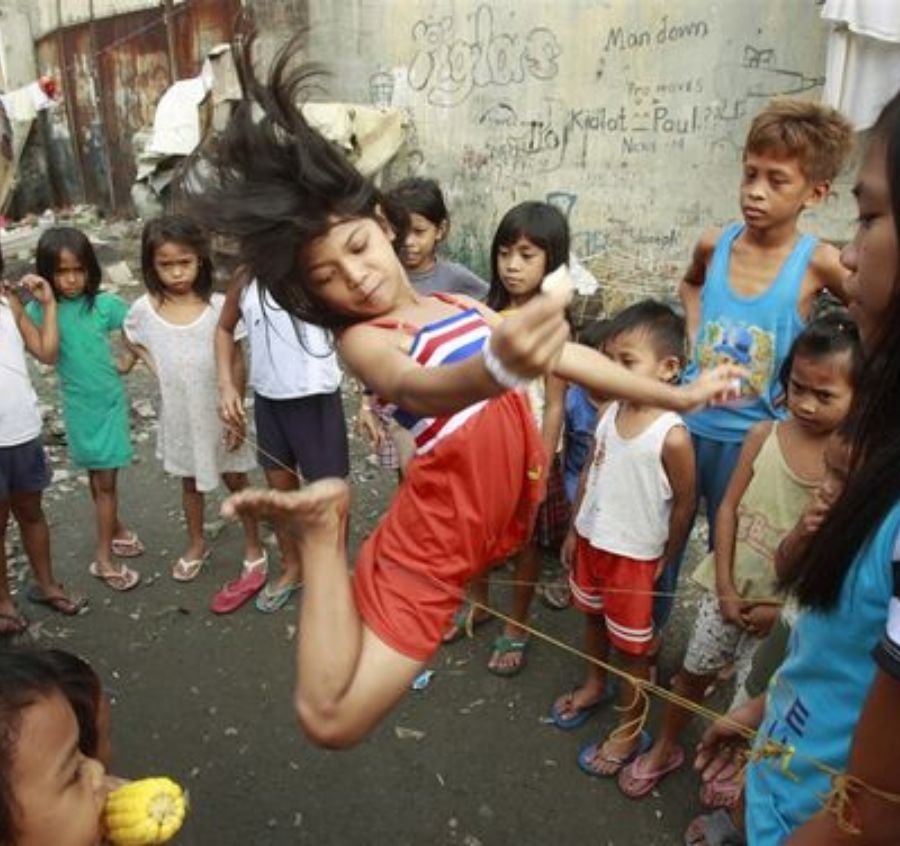
LANGIT LUPA
The taya pursues players who are permitted to run on level ground (lupa) and climb over things (langit). The taya can tag players who stay on the ground, not those who stand in the “langit” (heaven). The marked player then transforms into taya, and the game proceeds.
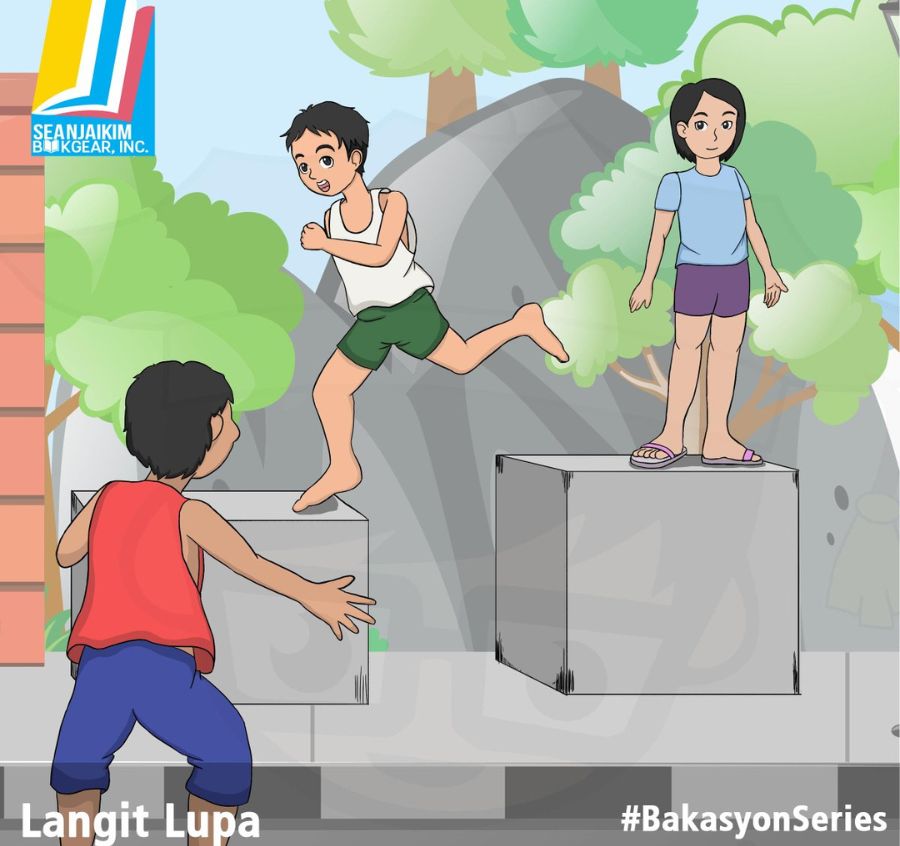
LUKSONG BAKA
In this popular form of the game Luksong Tinik, one player crouches while the other players jump over them. The crouched player gradually stands up as the game proceeds, making it more difficult for the other players to jump over them.
